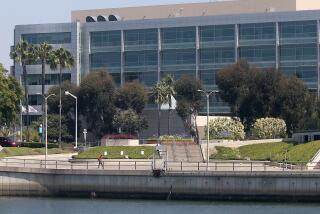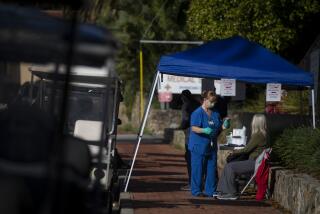Plan for CSU Development Agency Backed
- Share via
Ventura County officials Tuesday endorsed a proposal for an agency that would raise the tens of millions of dollars needed to develop the Cal State University Channel Islands site near Camarillo.
State Sen. Jack O’Connell (D-San Luis Obispo) has agreed to sponsor legislation to create an entity that would function much like a redevelopment agency.
The proposed authority, which would be unique at the state government level, is seen as the key financial mechanism to guarantee the university becomes a reality.
“This is one way of ensuring that we will get a university, and that’s the bottom line,” said J. Handel Evans, president of Cal State Channel Islands. “It really is an indication of the partnership between local officials, the county, the university and the Legislature.”
The authority would manage all financial aspects of the 690-acre former Camarillo State Hospital site--raising revenues from property and sales taxes generated at the site, selling bonds and providing tax incentives to lure high-tech companies to the state’s newest university campus.
For its part, the county would surrender any new tax revenue garnered in the next three decades from businesses and new homes around the university to the agency, to be called the California State University, Channel Islands Site Authority.
The county would have a voice on the authority’s governing board, with two of seven members to be chosen by the Board of Supervisors. Another four representatives would be named by the Cal State board of trustees, and the final member by local cities.
Supervisor Frank Schillo described the proposal for the agency as an indication of the financial constraints that have dictated the university’s evolution.
“It’s a product of what’s happening in the economy,” he said. “Money isn’t as available as it was many years ago for the development of a university.”
Gov. Pete Wilson on Friday earmarked $16.7 million in his proposed state budget to pay for converting buildings into classrooms and offices, which would enable the university to open by January 1999.
But an estimated $15 million more is needed for the next phase of the university’s development, which would result in the equivalent of 2,000 full-time students attending the school by 2002, Evans said.
That money is expected to come from projects such as a 1,200-unit community for retirees and from leasing some of the site’s 85 buildings to private companies.
“The authority can act as an economic development consortium to attract private-sector financing . . . to complement the university,” said Lyle Defenbaugh, a financial advisor to university officials.
State officials have continually asked for highly visible signs of local support to get the university up and operating. Supervisor Kathy Long describes the proposed legislation as yet another expression of the political importance the county attaches to the institution.
The bill’s draft language notes that the county would waive receipt of all property-and sales-tax proceeds from the university until the fiscal year 2030-31, when the county would begin receiving half of that money. County officials have not projected how much revenue the project would generate.
Still, Long lauded the idea for the authority, which Evans initially pitched to county officials in August as a way of cutting the cost of converting the sprawling hospital site into a modern educational institution.
“This is an economic engine,” Long said. “This is a professional engine. It is an economic jewel to be very proud of.”
The authority is also intended to respond to community concerns surrounding the university’s development, such as the proposed $12-million widening of Lewis Road.
“We don’t want to develop the site in such a way that we go to war with the surrounding area,” Evans said. “And the best way to do that is to have the county sitting at the table.”
More to Read
Sign up for Essential California
The most important California stories and recommendations in your inbox every morning.
You may occasionally receive promotional content from the Los Angeles Times.













